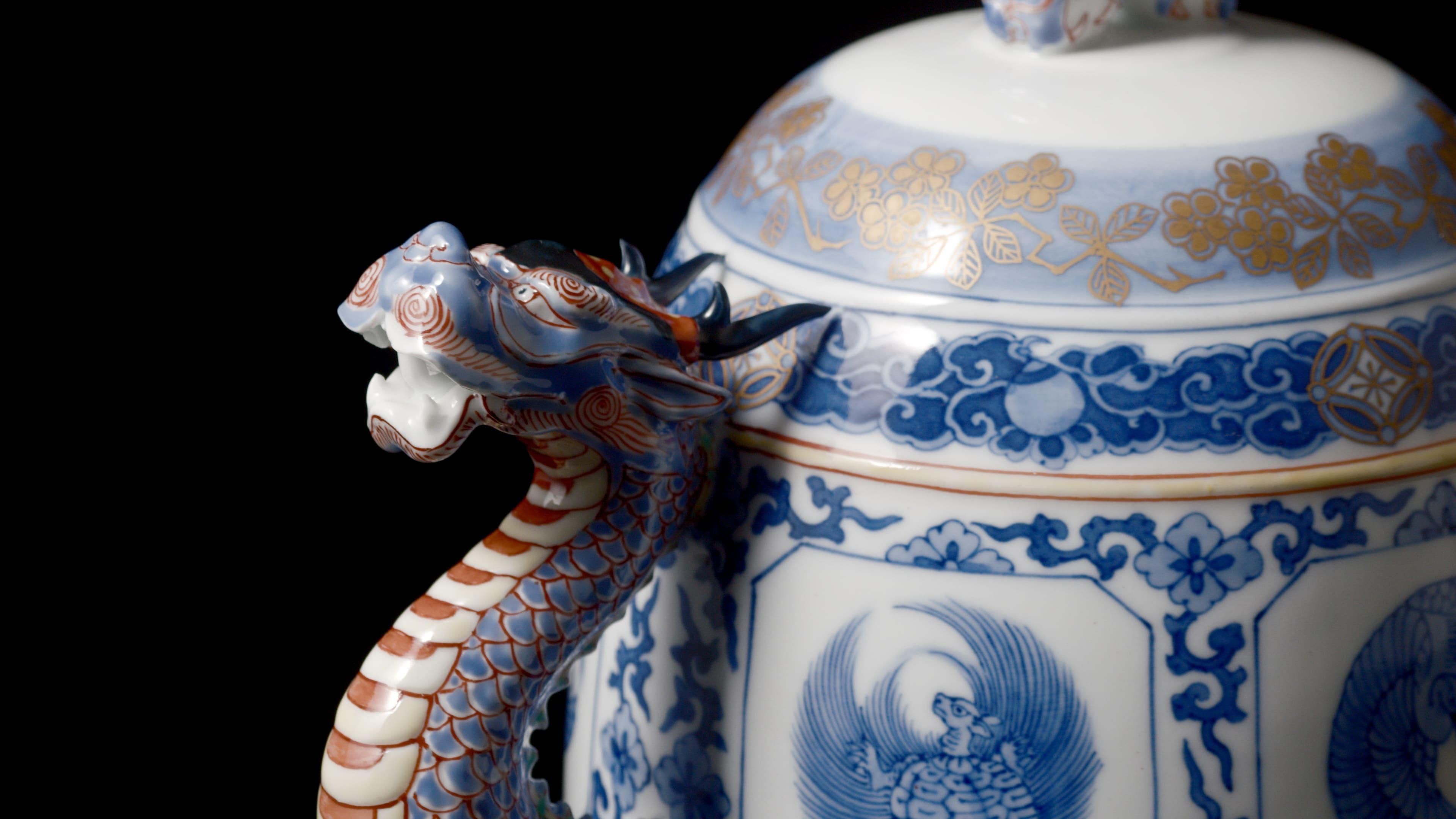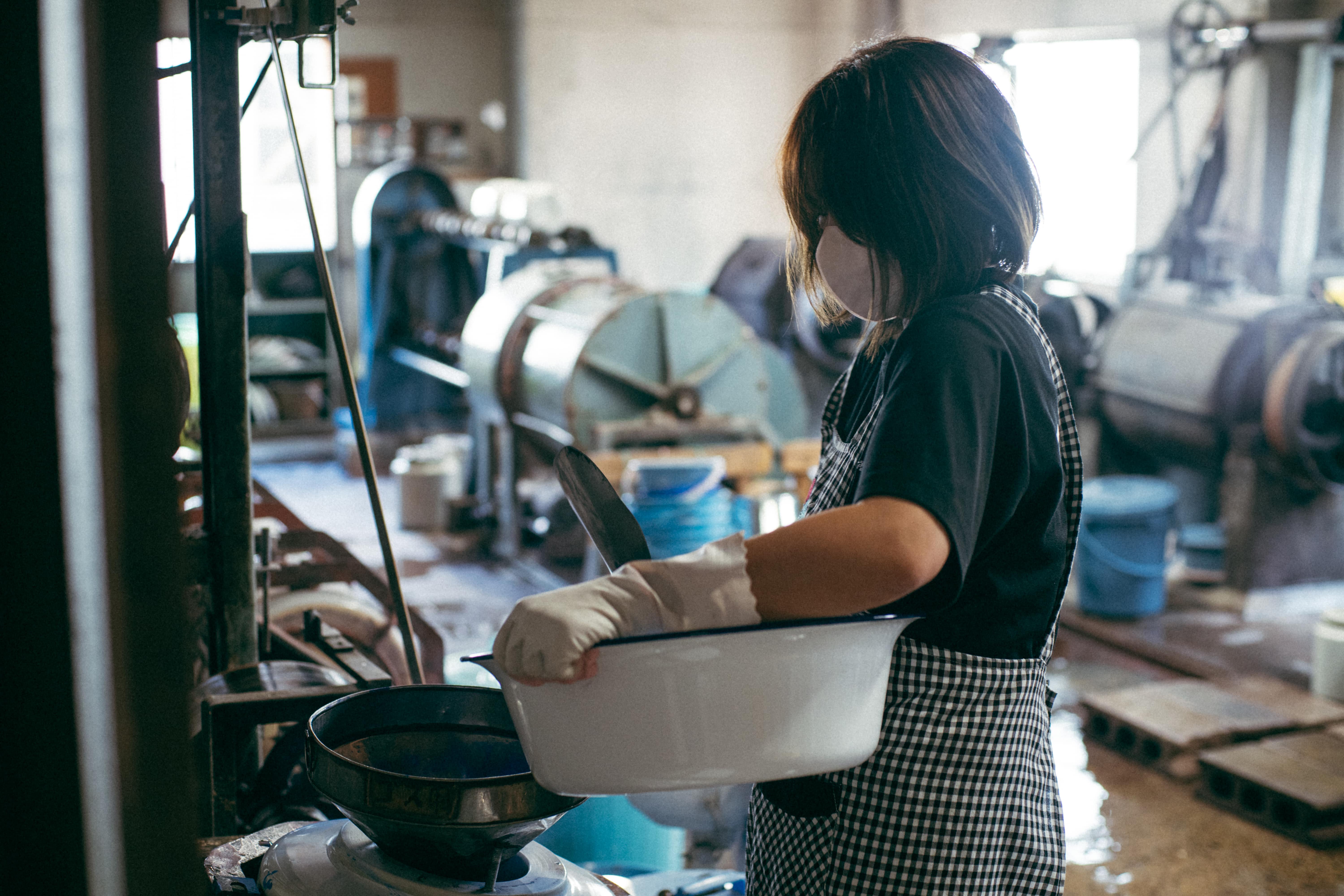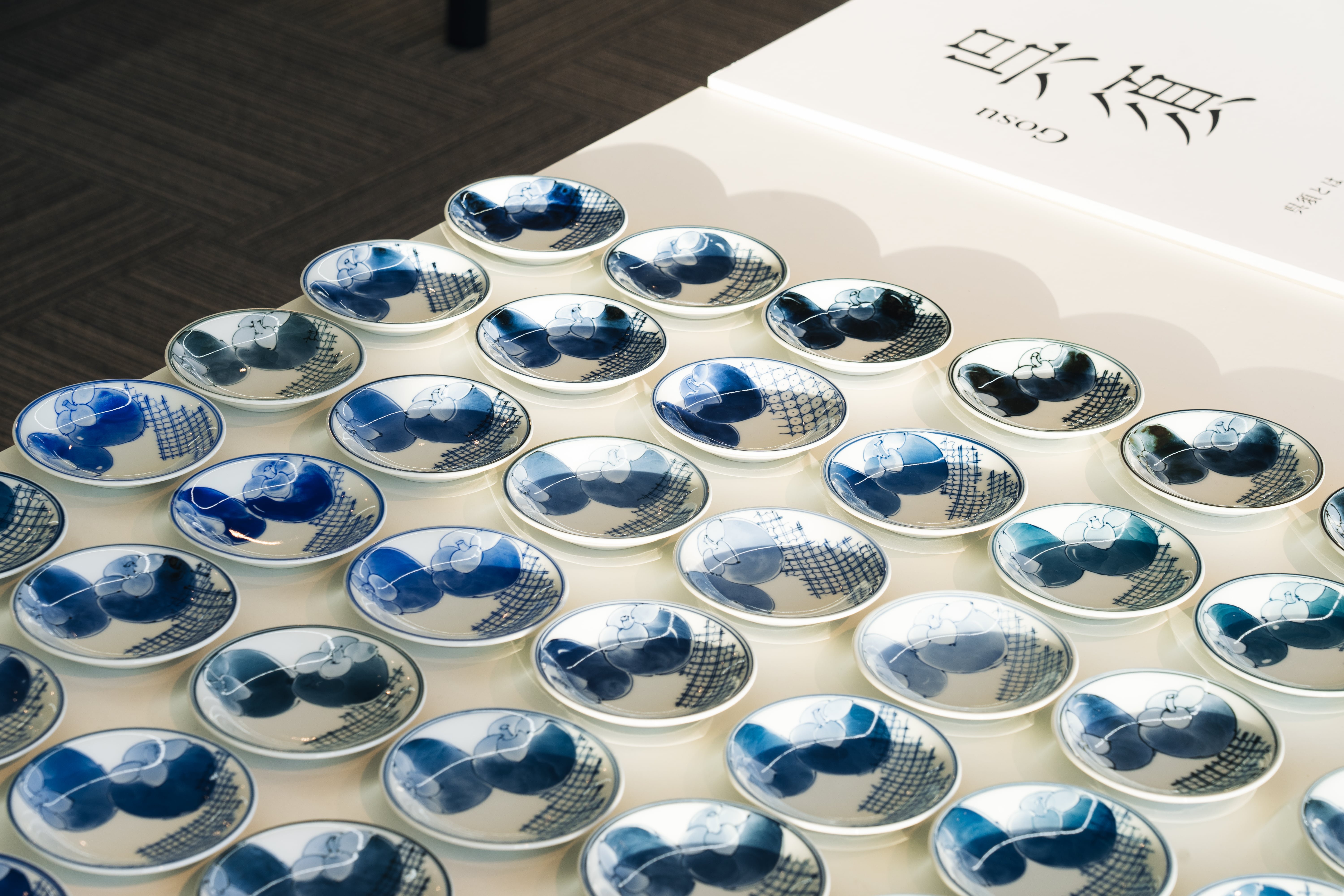【quality】

Shinkai Shoten's blue and white porcelain and somenishiki ware made using gosu have been beloved by royalty and aristocrats from around the world for over half a century, and are also exhibited in museums.
In addition, artists who use Shinkai Shoten's gosu have been featured in their blue and white porcelain on the programs Wafu Souhonke (Osaka Television), which conveys the beauty of Japan, and Ippin (NHK), which conveys Japan's excellent traditional performing arts.
It is also used for signs for research institutions and government agencies.
[Manufacturing process]

To maintain this high quality,
It takes more than a month from the start of production to completion for Shinkai Shoten's gosu.
Shinkai Shoten 's unique blend of ingredients ,
Shinkai Shoten 's unique gosu firing technique ,
The only technology in Japan to refine the grains of gosu
By going through these processes, the painting becomes smooth and the gosu is less likely to burn even when it is highly concentrated .
You won't have to go through the trouble of painting the cobalt blue yourself once the product arrives .
Shinkai Shoten is the only gosu manufacturer that sells its products directly online.
That's why we are able to offer such high quality at low prices.
[History of Gosu]

The chemical gosu currently used in Japan began to be developed by the Shinkai family during the Meiji period.
In 1870, the German chemist Wagner came to Arita because he was knowledgeable about science.
Mr. Wagner tells Shinkai Heizaemon, Suminosuke, and Takeji (father and son) that in Germany, cobalt is used to produce the color blue.
After hearing this story, the Shinkai family conducted extensive research and developed a scientific method for producing gosu using cobalt as the main ingredient.
As a result, synthetic gosu, which was inexpensive and had good color development, began to be used in Arita and other parts of Japan.
Please try our high-quality gosu, which is made using history, tradition, and the power of chemistry. 
[How to use]
Soil type : Porcelain and ceramics possible
Firing method : Oxidation and reduction possible
Suitable firing temperature : 1230-1300℃
[Frequently Asked Questions]
Q: How do I use the paint?A: It is in a paste form, so please dilute it with water according to the purpose. For line drawing, use about twice the amount of water as the paint (dark, medium, light). Since there are individual differences in the color of the paint and brush strokes, please use this as a guide only.
Q: Should I add an adhesive such as gum arabic?
A: If the paint is not compatible with the fabric or if there is a process that requires the painted surface to be touched by hands repeatedly, it may be better to add a small amount.
Q: How should I store paints that I won't be using for a long period of time?
A: We recommend storing it in an airtight container. If it dries out, grind it again in a mortar and pestle, add water, and use it to make it into a paste.
Q: The paint settles and is difficult to use. Is there a solution?
A: The response will vary depending on the condition of the paint, so if you contact us we will explain the appropriate course of action.
Q: What causes paint to repel?
A: If you use too much paint, it may repel. It may also be caused by the storage conditions of the paint, so please contact us.
[Firing conditions for sample plates]

・Ceramic clay ingredients <br>Amakusa selection
(SiO2 72.04% Al2O3 18.16% Fe2O3 0.65% TiO2 0.04% CaO 0.49% MgO 0.09% Na2O 0.58% K2O 3.00% Ig.Loss 4.55%)
・Firing temperature (reduction)
1280℃
【postage】

Nationwide uniform
For purchases of less than 3,000 yen, the price is 880 yen (tax included)
For purchases of 3,000 yen or more, 550 yen (tax included)
【shipping】

If you place your order before noon , it will be shipped the next business day .
If other ordered items, such as made-to-order glazes, take longer to manufacture, we will ship your order accordingly.









